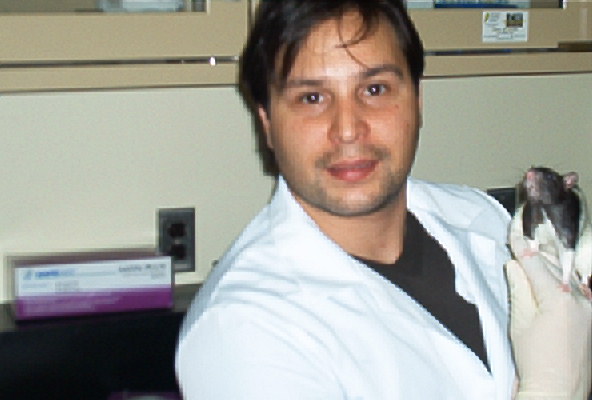......................
Welcome to the EP1 Data page!
Using the arrow buttons above, you can navigate to three different pages, all of which deal with different pain testing techniques and experiments. Keep in mind these results are for tests performed on EP1 knockout mice, and their wild type counterparts only. For information on EP2, and other KO's please refer to the main page and click on the appropriate link. Now, before you get started looking at the data you might want to familiarize yourself with the equipment, materials, and methods I used. Below, I have several pictures as well as explanations on how the different experiments were performed. The graphs and explanations you will view are the results of experiments I performed in the lab of Ronald G. Wiley, MD, Ph.D.. If you would like to know more about his lab and his research interests simply click on his name.
This is a picture of the Tail Flick Algesia Meter. The way it works is that a beam of light shines down from the top black box in the picture, and heats the proximal portion of the mouse's tail. The mouse in a containment apparatus under the napkin. At a certain point in time (latency), a spinal reflex causes the mouse to flick his tail, thereby recording a numeric value, in seconds, of how long it took him to react. By the way, the above statement was not a sexist remark; all mice were male to prevent reproductive cycles in female mice from interfering with the time constraints of this project. There are controls for the sensitivity and beam intesity and an explanation of the methods used.
...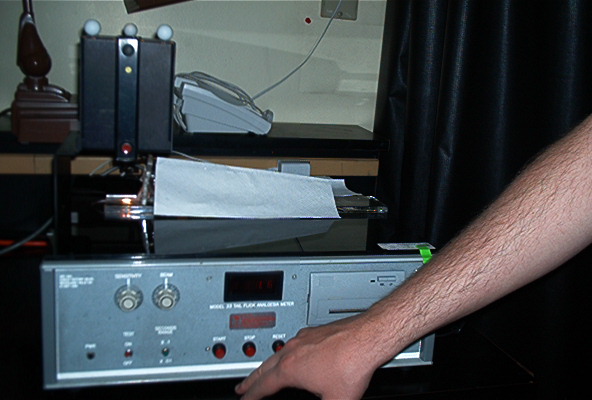
To aid in obtaining unbiased readings, all tests were performed 'blind", that is to say the genotypes of the mice (wildtype or knockout), were not even revealed to myself. I obtained the genotypes from the lab the mice originated from only after the experiments were concluded. Other considerations taken where those of circadian rythms, acclamtion to environment and handler, recovery periods between different test. This means: I conducted all experiments at roughly the same time of day, at an extremely low-light and noise level, I alone handled the mice, and sufficient time was given for recovery (24 hours for this experiment), per the literature researched.
From left to right, the pictures below are of: 1) The containment apparatus and mouse (with tail exposed for the experiment), 2) A close-up of a mouse being tested (with the beam shining down on his tail), 3) "The Mouse Hotel" were we kept all the mice we worked with, 4) Picture of me holding a rat just prior to observing and learning the technique of stereotactic brain surgery which was perfectly performed by Robert Kline, IV, the head research assistant in Dr. Wiley's lab. A special thanks goes to him for assising me in learning all the required techniques...........Thanks a million Bob!!!
....1) 1)..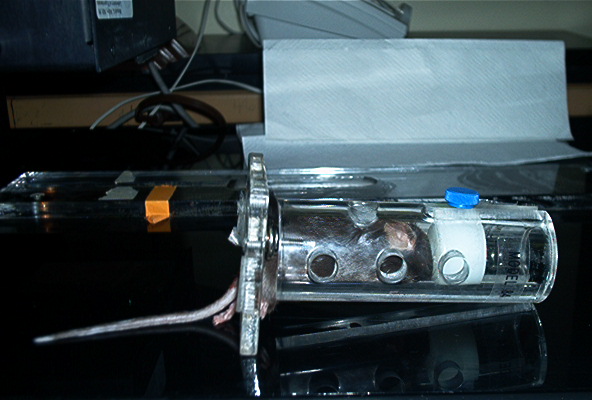 ...
.2)).
...
.2)). 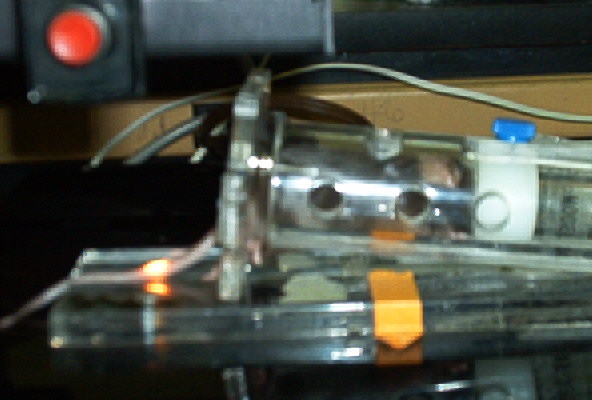
3)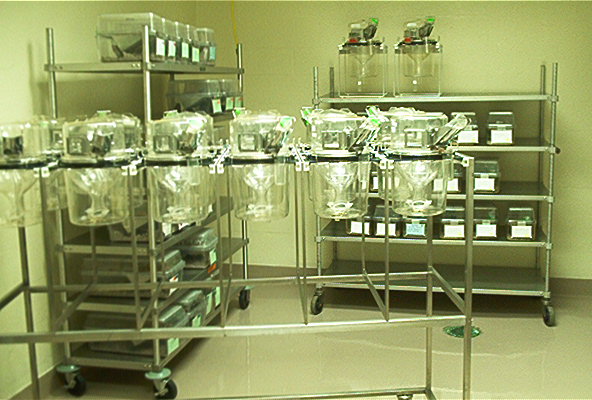
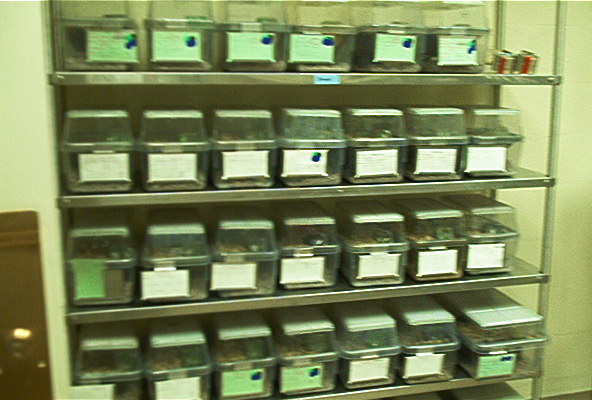 4)
4)